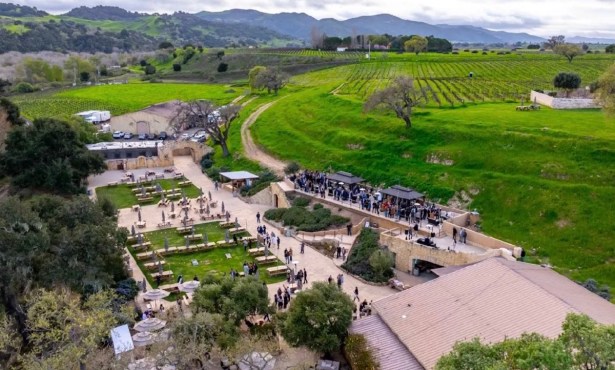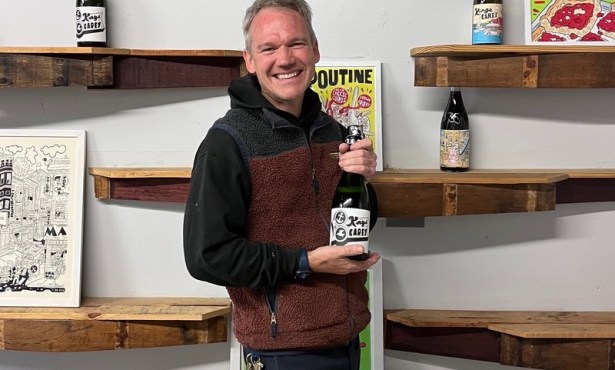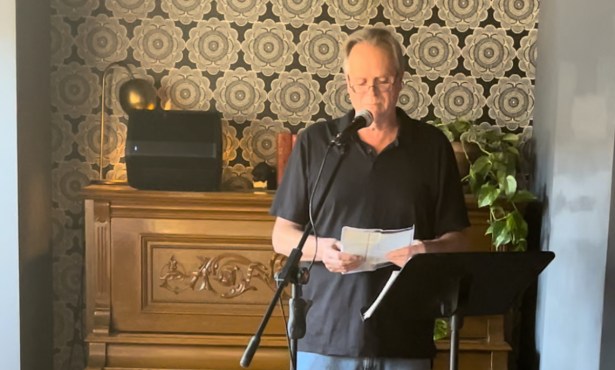Pinot Files for the Pinot-philes
World of Pinot Noir Comes to the Bacara This Weekend
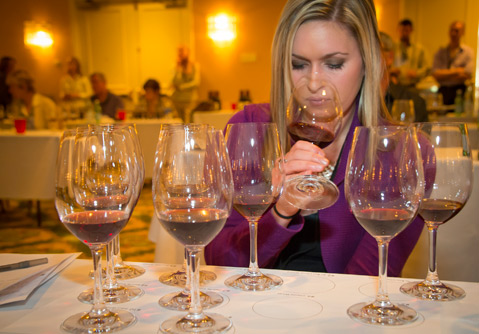
For the first time in its 14-year history, the World of Pinot Noir — one of the most anticipated annual events surrounding the Burgundian grape — will not be held in Pismo Beach. Instead, about 230 pinot pourers for more than 1,700 pinot lovers will descend upon Goleta’s Bacara Resort & Spa this weekend to sip and study this finicky yet beloved wine grape.
Though many of the WOPN (pronounced by veterans simply as “whoppin”) seminars and dinners are already sold out, tickets do remain for the grand tastings on Friday and Saturday, February 28 and March 1, when you can check in on the state of pinot in 2014 from appellations both close (Sta. Rita Hills, Santa Maria Valley, Edna Valley) and on the other side of the globe (New Zealand, France, Chile). Here are three Santa Barbara vintners who’ll be among the countless names and notions buzzing about. (See worldofpinotnoir.com.)
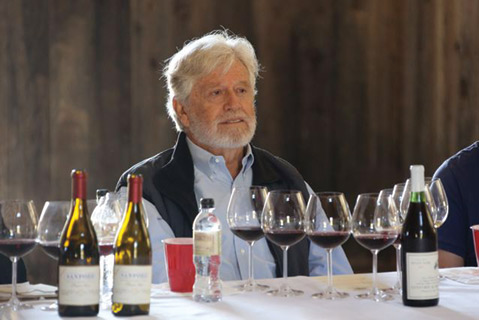
Michael Benedict
In 1971, botanist Michael Benedict and his then-partner Richard Sanford changed the winemaking world by risking everything to plant a vineyard along Santa Rosa Road, by far the coolest, westernmost place attempted for wine grapes on the Central Coast. Forty-three years later, Sanford & Benedict is the jewel of the Sta. Rita Hills appellation, now considered one of the best places on the planet for pinot noir and chardonnay.
After selling his interest in 1990 to focus on raising his family, Benedict remained involved only as a consultant on the fringes of the industry for decades. But today, Benedict is back in a very real capacity, establishing a new vineyard (mostly of merlot and cabernet franc) and winery project called Lavender Oak on the eastern edge of Santa Rosa Road. Perhaps more impactful, Benedict is also cheerleading his latest maverick prediction: that the Sta. Rita Hills will be eventually considered one of the best places for growing sparkling wine in the world.
“I think it’s the best place for sparkling in North America,” said Benedict last week, while walking through the spindly starts of the new Lavender Oak Vineyard. “You can test that bet in 50 years.”
The reason is the climate, specifically the weather around July and August, when the grapes are accumulating most of their flavors. In the never-too-hot Sta. Rita Hills, the temperatures allow malic acid to accumulate alongside slowing ripening sugars, which together make for the more yeasty bread, brioche, and biscuit qualities desired in bubbly. Recent sips of Brewer-Clifton’s sparkling 3D and the base wine for a forthcoming Sanford Winery bubbly revealed those characteristics in spades.
This ability is just another component of everything that the full length of the Santa Ynez Valley offers. “We have all of Western Europe compressed into 30 miles, from Champagne down to Naples,” said Benedict, explaining that he and others are trying to do in 40 years what took 2,000-plus years in Europe. “We’re just scratching the surface. Most of the best vineyards haven’t even been planted yet. They’re just being discovered.”
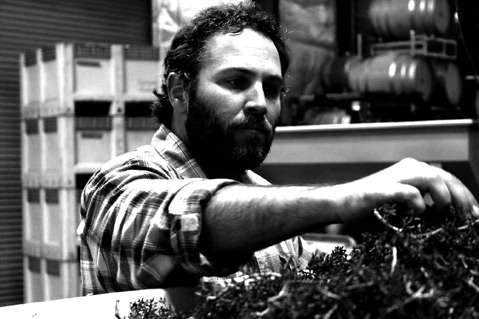
Ryan Deovlet
Ryan Deovlet’s route to winemaking is punctuated by a series of epiphanies, but the first didn’t involve wine at all. About a decade ago, he was visiting his fisherman cousin in Hawai‘i, and they were chowing down on a big haul of tuna while sipping some Kona coffee from a single plantation nearby. The brew’s intimate connection to place got Deovlet’s mind spinning: As he explained, “I thought about that for a long time.”
When he returned to his native California — he grew up in Orange County and studied sociology while playing baseball at UC San Diego — Deovlet heard about an organic-farm program in Australia and was soon working Down Under’s grapevines, eventually tackling New Zealand’s vineyards, as well. Winery gigs at Stephen Ross Wine Cellars in San Luis Obispo, Red Car Wine in Sonoma, and Paul Hobbs’s Viña Cobos in Argentina followed, along with two pinot-specific epiphanies: the first, reading The Heartbreak Grape about Josh Jensen’s quest to build the Calera Winery in Hollister, and then seeing Jensen alongside Richard Sanford and other pinot pioneers at WOPN 2007.
“Richard hit it out of the park,” said Deovlet, recalling that the Sta. Rita Hills visionary claimed the grape had magic but required a lifetime of commitment. “That was powerful for me.” So Deovlet approached Sanford, who sold him grapes from La Encantada Vineyard fruit, which Deovlet used to found his eponymous label. With Sanford’s “instrumental” support, Deovlet was soon able to secure fruit from Solomon Hills and Bien Nacido in the Santa Maria Valley, and his production steadily grew to about 1,500 cases today. He’s also the head winemaker at Refugio Ranch, making various white and red blends, and is in the midst of his first sparkling wine project with friend McPrice Myers.
Deovlet likes to think that he mixes a bit of the old-school techniques with modern winemaking. “To this day, I take a lot of field trips,” he said. “I make it a point to pick brains and talk shop and continually evolve my winemaking philosophy.” He’s also in the vineyard often, at least once every 10 days when the fruit is hanging. “When pinot is ready and right, it happens fast,” said Deovlet. “I don’t want to just react when the fruit shows up but to be part of the whole growing season. I would hope all winemakers are doing the same.”
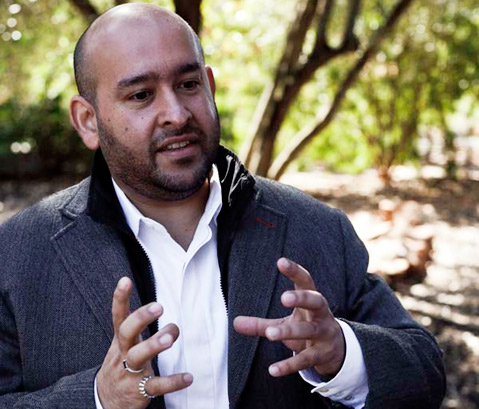
Rajat Parr
When sommelier Rajat Parr started a small tasting group with his friend Jasmine Hirsch of Sonoma Coast’s Hirsch Vineyards back in 2011, he didn’t imagine that they’d create a flash point for contemporary wine culture. Today, their pinot-noir- and chardonnay-focused In Pursuit of Balance event series — which happens annually in both New York and San Francisco — features less than three dozen wineries that are hand-selected by a committee of experts. They must unanimously agree that a submitted bottling achieves the desired level of “balance,” an elusive state that, in this particular parlance, tends to mean wines that are usually harvested earlier in the season in order to retain more acidity and verve but less overt fruitiness and alcohol.
The original motivation was to give an antidote to the over-oaked chardonnays and opulent pinots from California common on grocery-store shelves around the country. “There are producers who look for more elegance and more acidity and whatever you want to call it,” said Parr, who’s behind the brands Sandhi and Domaine de la Côte, both of which will be poured at WOPN this weekend. “It’s not better or worse — it’s just different.”
However, as the pursuit grows, so, too, does backlash from vintners both young and old. They see the movement as too focused on low alcohol as a measure of wine quality; fear that this move for leaner, very austere wines may push the public toward wines that don’t taste good; and take offense at the implication that wineries not included are not interested in making balanced wines.
Parr, who started getting “hate mail” soon after the first tasting, understands that there will be opposition once any group tries to set itself apart, but he believes the critiques are misguided. “People say that our wines have to be under 14 percent alcohol, that it has to be this or that, but there are no rules at all,” explained Parr, who just moved into his new home on Santa Barbara’s Riviera. “We don’t want to put anyone down — that’s not the goal. I’m not in the business to fight with people.”
Parr believes that, if anything, his group has opened the eyes of the discriminating consumer. “Maybe we’ve made people aware that there is another path, that there is another style,” said Parr. “People can choose for themselves. A lot of people like everything; they like different wines on different days. It’s not our jobs to tell them, ‘You can’t drink this.’ We’re just here to add some color to the mix.”

